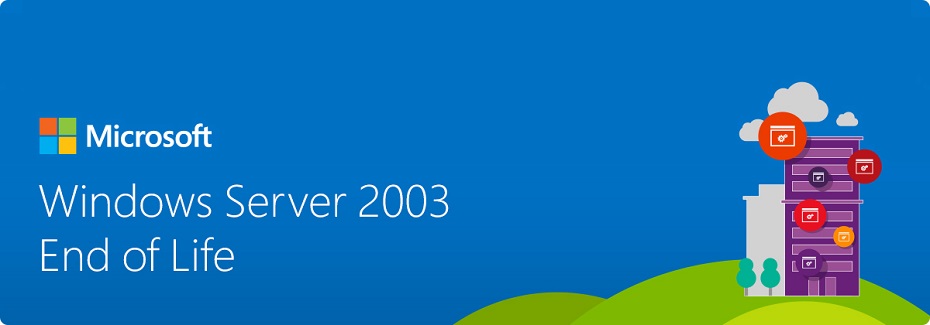Windows Server 2003 End Of Life

Extended support for Windows Server 2003 will end on July 14, 2015, and it is a deadline that many companies will undoubtedly miss. Feeling under pressure from Microsoft to perform a server migration to a more modern platform may not be an exciting thought, but if you remain on Windows Server 2003 after the deadline you risk being exposed to security vulnerabilities as well as a lack of future updates and support from Microsoft. On top of this, you’re missing out on improvements and innovations that Windows Server 2003 does not have.
The International Data Corporation (IDC), an American market research, analysis, and advisory firm, has composed a list of observations and recommendations for customers still using Windows Server 2003. According to HP, 11 million systems are running Windows Server 2003, and each of these would need to be upgraded to continue receiving crucial updates.
Don’t Miss the Deadline
Missing the deadline may result in less stable and less secure infrastructure for your company. Maintenance costs of running a legacy server are expensive, and these costs will increase as you continue to use aging hardware. There will be no more updates to fix bugs, security vulnerabilities, or performance issues. In addition, once support ends, your company may fail to meet industry-wide compliance standards. Non-compliance could result in in the loss of business and penalties that could dramatically increase the cost of doing business.
The reality is that, for many customers, this is about more than just Windows Server 2003. Given the age of the installation, the chances are high that other software products beyond the operating system are aging as well. The list of products that customers may be concerned about would include applications, database products, and management tools, all of which may be approaching or already past their supported life cycles, leaving customers at even further potential risk should a problem arise. Regulatory compliance and support life cycles are not purely operating system issues.
The benefits to upgrading include even more than enhancements to productivity, efficiency, and security. Hyper-V and web server improvements, virtualized datacenter capabilities, and access to the cloud are some of the many new and updated features supported by Windows Server 2012. Microsoft commissioned Forrester Consulting to quantify the cost benefits of upgrading, and the final report found that upgrading to Windows Server 2012 delivered a risk-adjusted ROI of 270% with a payback period of six months, and a decrease in Windows Server management costs by 35%.
Don’t let the July 14th deadline for Windows Server 2003 sneak up on you. No matter what move you choose to make next, ensure that you have a trusted IT partner like Zuma Technology at your side to assist you as you navigate through these changes.
